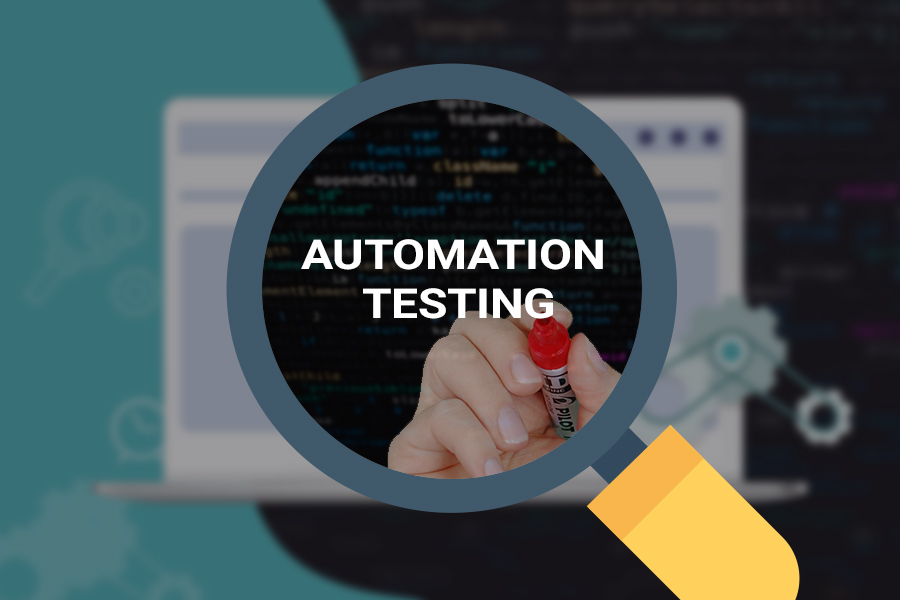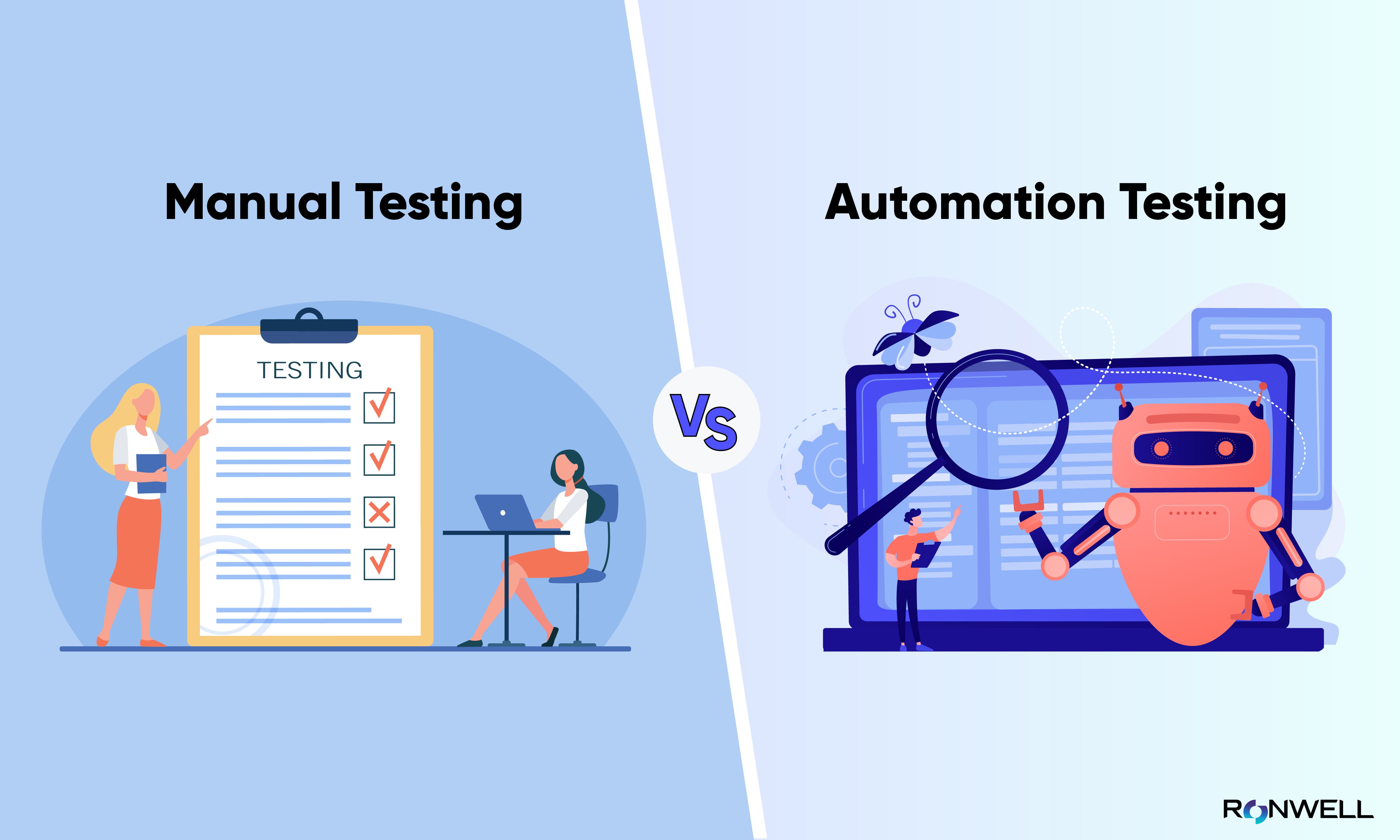The Ultimate Overview to Implementing Automation Testing Efficiently
From Handbook to Automated Testing: A Comprehensive Overview to Transitioning Efficiently and Efficiently
In the realm of software program testing, the shift from handbook to automated procedures has actually ended up being a significantly vital change for organizations seeking to boost efficiency and accuracy in their screening techniques. As modern technology proceeds to development, the demand for efficient and seamless automated testing approaches has actually never been extra pressing. The trip from manual to automated screening is not without its challenges, however when approached purposefully and with a clear plan in mind, the benefits can be substantial - automation testing. In this comprehensive overview, we will certainly explore key actions and factors to consider crucial for an effective shift, from the initial selection of tools to the integration of automation right into existing operations. Keep tuned to reveal the understandings that will certainly assist lead the method for a smoother and extra effective testing process.
Advantages of Automated Evaluating
Automated testing provides many advantages, boosting effectiveness and precision in software development procedures. One key benefit is the considerable reduction in screening time. Automated tests can be run concurrently on numerous devices and operating systems, dramatically speeding up the testing stage contrasted to manual testing. This enhanced efficiency enables faster feedback on the high quality of the software, making it possible for developers to recognize and attend to problems without delay.
In addition, automated testing guarantees a higher degree of precision in spotting problems. Considering that automated tests follow predefined scripts, human mistake is minimized, resulting in even more dependable test results. Uniformity in testing is additionally boosted, as automated tests execute the very same actions specifically each time they are run. This uniformity is vital in making sure that all functionalities of the software application are extensively tested, lowering the likelihood of unseen pests slipping with to production.
Choosing the Right Tools

To start with, examine your goals and requirements. Comprehend the scope of your task, the modern technologies entailed, and the capability of your group. This evaluation will certainly help you figure out the abilities and attributes you need in your screening devices.
Second of all, take into consideration the compatibility of the devices with your existing systems and procedures. Smooth integration with your present software program development lifecycle is necessary to ensure a smooth shift to automation.
In addition, evaluate the scalability and adaptability of the tools. As your screening requires progress, the devices should have the ability to adapt and accommodate changes properly.
Finally, factor in the support and neighborhood around the tools. When implementing automated testing, robust support and an active user neighborhood can offer valuable sources and help. By thoroughly taking into consideration these facets, you can pick the right devices that line up with your needs and established the phase for a successful shift to automated screening.
Writing Reliable Test Scripts

When crafting examination scripts, it is necessary to think about the specific demands of the software being checked and ensure that the manuscripts address all vital functionalities. Clear and detailed naming conventions for examination manuscripts and check my source test situations can enhance readability and maintainability. Furthermore, including error handling systems within the examination manuscripts can assist in recognizing and dealing with concerns promptly.
Additionally, arranging examination scripts into modular elements can boost reusability and scalability, reducing redundancy and improving performance in test manuscript maintenance. Regular evaluations and updates to test manuscripts are essential to maintain rate with evolving software demands and capabilities. By adhering to these concepts, testers can create robust and efficient examination manuscripts that add considerably to the success of automated testing processes.
Integrating Automation Into Workflows
Effective combination of automation devices right into existing process simplifies procedures and boosts productivity within software development cycles. When incorporating automation right into operations, it is crucial to identify recurring jobs that can be automated to conserve time and minimize human mistake. By flawlessly incorporating automated screening devices like Selenium or Appium right into the software program advancement lifecycle, teams can accomplish faster feedback on code modifications, bring about quicker insect detection and resolution. This assimilation enables continuous testing throughout the development procedure, making certain that any kind of problems are identified early on, causing greater software application quality. In addition, automation can be made use of to activate tests instantly after each code dedicate, offering go immediate recognition and maximizing testers to focus on even more complicated scenarios. Correct combination of automation tools calls for partnership in between advancement, testing, and procedures teams to develop a unified process that maximizes effectiveness and effectiveness in supplying high-grade software items.
Making Sure a Smooth Change
Efficiently transitioning to automated testing includes careful preparation and careful execution to lessen disturbances and maximize performance in the software development process - automation testing. To guarantee a smooth shift, it is crucial to begin by conducting an extensive evaluation of the present screening procedures and recognizing locations where automation can bring one of the most substantial advantages. Involving with all stakeholders beforehand in the procedure, consisting of programmers, testers, and task supervisors, is critical for amassing assistance and buy-in for the automation effort
Interaction is crucial during this shift stage. Clear communication of the goals, benefits, and expectations of automated testing assists to manage any resistance or issues that may occur. Additionally, providing ample training and sources for employee to upskill in automation devices and strategies is crucial for making sure a successful transition.

Conclusion
To conclude, transitioning from manual to automated testing provides many advantages, including raised efficiency and reliability. By selecting the appropriate tools, writing effective test manuscripts, and incorporating automation flawlessly right into operations, companies can make sure a smooth and effective shift. It is vital to welcome automation as a beneficial property in software program screening processes to improve overall quality and performance.
In the world of software application testing, the shift from guidebook to automated procedures has actually become a progressively vital transition for companies looking for to enhance efficiency and precision in their testing practices. Automated examinations can be run concurrently on several devices and running systems, substantially speeding up the screening phase contrasted to hands-on testing. Uniformity in testing is also boosted, as automated tests execute the very same steps exactly each time they are run.To guarantee the effective application of selected screening tools, the production of effective examination scripts plays a critical duty in verifying the functionality and performance of automated procedures - automation testing. By complying with these concepts, testers can produce effective and durable examination scripts that add substantially to the success of automated screening processes